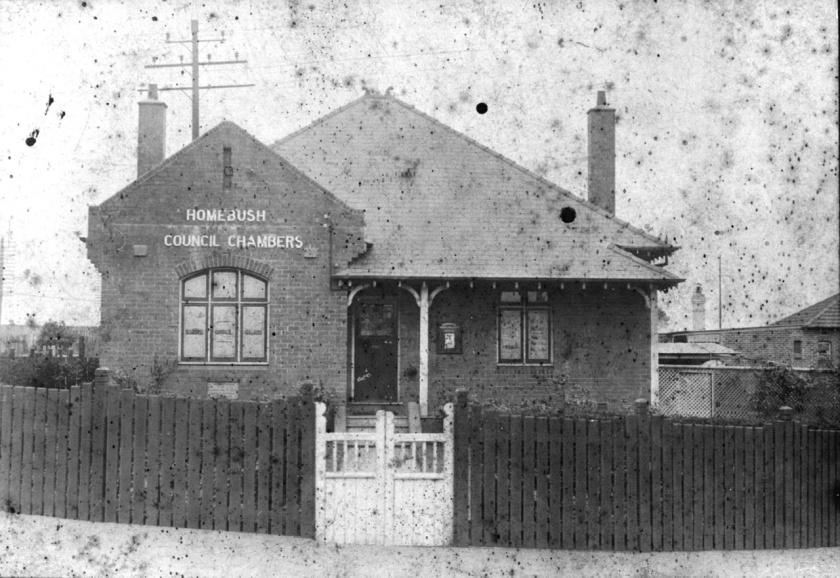by Cathy Jones
The small area of Homebush, located north of the railway line, remained unincorporated as an area of local government until 1906. While this area only had a small population, the North Homebush Progress Association was established in 1899 to lobby for improvements to the Homebush area, particularly improvements to the condition of Powell’s Creek. They also began petitioning for establishment of local government in Homebush, which had already been established in neighbouring areas such as Strathfield and Concord.
The petitioning was successful and on 6 June 1906, Homebush Municipal Council was incorporated by proclamation of the NSW Governor. At the time of the incorporation, the area measured 600 acres with 6 and half miles of streets with a population of 548 people, 90 houses and 170 ratepayers.
The boundary of the new Council was described as:
County of Cumberland, parishes of Concord and Liberty Plains; area about one mile commencing on the centre of the railway line from Parramatta to Sydney at a south-eastern corner of the Municipality of Rookwood; and bounded thence by the part of the eastern boundary of that municipality and its continuation generally north-easterly to the south-western boundary of the Municipality of Concord; thence by that boundary and the south-western boundary of the annexation to the latter municipality generally south-easterly to the western boundary of Burwood Municipality; thence by that boundary southerly to the northern boundary of the Municipality of Strathfield; thence by that boundary and the northern boundary of the annexation of that municipality generally westerly, to the point of commencement.
The first meeting was called by the North Homebush Progress Association under instructions from the Chief Secretary of State with the intention of appointing a presiding officer and returning officer and also to fix the date of the first election.
The election of Aldermen was held on 18 August 1906. The first Aldermen elected included: Harry Kite, Thomas Dalton, George Knight, Charles Hughes, James Slattery and Herbert Wilkins.
The first meeting of Homebush Council was held in Mrs Wrights’ building, Parramatta Road Homebush on Friday 31st August 1906 to elect the Mayor. Alderman Harry Kite was the first Mayor of Homebush Council.
The first full meeting of Homebush Council was held on Monday September 10 1906. The first council included the Mayor Ald. Kite and Aldermen Dalton, Knight, Hughes, Slattery and Wilkins.
From 1906 to 1909, the Council rented a portion of the School of the Arts including use of a hall for public meetings, until the Homebush Council Chambers were built.
Parts of Homebush Municipality are built on the large Underwood Estate. By the time subdivision of streets commenced, markers were already established such as Parramatta Road and the Railway Line, which determined how land was subdivided. The Homebush Bay wetlands and Powell’s Creek also provided a constraint as substantial amounts of land were unusable for building, though much of the wetlands was filled and reclaimed as tips, later parks.
Homebush Council contained considerable land dedicated to commercial and industrial use, namely the Sydney Stock and Cattle Yards [now Sydney Markets], established 1909. Tipping sites were established, where Bressington Park now stands. Other significant industrial sites included former EMI Records factory [Parramatta Road and Columbia Lane].
Homebush Council adopted a Residential Proclamation in 1927.
Homebush Council operated until 23 May 1947, when it was merged with Strathfield Council.
The first meeting of the Provisional Council of the Municipality of Strathfield (which incorporated the former Homebush Council) was held on 23 May 1947. The provisional council included three aldermen from the former Homebush Council – Aldermen Smallwood, Clifford and King. Colin Hudson was elected Mayor of the Provisional Council.
The building of the M4 motorway involved relocation of streets in Homebush and some streets became dead-ends such as Short Street. The establishment of Sydney Markets in 1975 also involved relocation and abolition of some streets in Homebush. Building of Homebush Bay Drive has also altered street alignments such as Malborough Rd and Austin Avenue.
